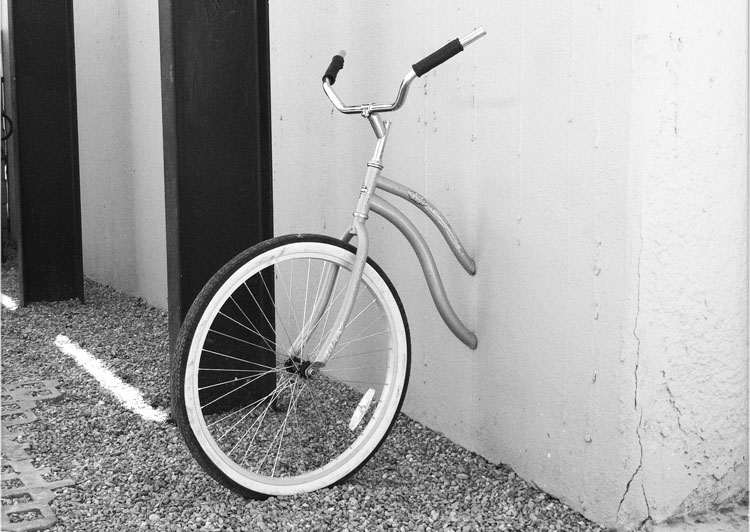Today’s post is by contributing writer Kirby Hoyt:
Last week I was reading an article about the advertising executive who created the incomparable slogan for Nike: “Just Do It.” His revelation came by way of several events that converged and ultimately led to him thinking about Gary Gilmore’s last words before his execution “Let’s do this.” Now that slogan is etched into our collective conscience by way of multi-media advertising and for some, they have been words to live by.
Where urban theorists propose methods of operation, agency, and aesthetics, practitioners worry about things like constructability, mobility, cost, and liability. The reality of “doing it” is much more demanding that the consequences of “Just Think About It.” Now don’t get me wrong, I’m not dissing on theory. I’ve read so many books on theory and philosophy it would make your ontological head spin.
My practice has been focused on the fusion between theory and praxis. I relish the process of thinking outside the box and relating concepts to metaphysical conditions, yet I understand that at the end of the day these conditions may not be seen, heard, or even understood. Therefore, the need to complete a dialogue inclusive of the pragmatic advancement of the project is very important. In dealing with temporary urbanism, the theoretical side may deal primarily with conditions such as hermeneutics (interpretation) or semiotics (study of signs) while the pragmatic may concern issues such as getting a permit for a water meter. The latter is not nearly as sexy for me but without it, would cause the entire project to fail.
Recently our firm has been working on a couple of temporary urbanism projects in downtown Phoenix; essentially vacant properties that have potential to be useful in the urban realm until the markets dictate more permanent construction. What I’m finding by working toward implementation of these temporal spaces is how the knowledge of execution (the process of “Just Do It”) adds exponential value to future theoretical endeavors for these projects. Once we figure out the logistics, responsibilities, operations, and entitlement requirements, the ability to expand on the design concepts for these spaces is greatly enhanced. Additionally, getting a couple of these projects implemented will allow all of us to evaluate, on the ground, the viability of these spaces and how they are received by various user groups. I’ve spent quite a bit of time watching people utilize places I’ve designed and it never amazes me how there is some form of engagement within the site that was never imagined. But we learn from doing and observing, and the lessons are very valuable.
So far the City of Phoenix has been absolutely amazing in participating in the process. They’ve exhibited a “Just Do It” mentality. The cooperation that is taking place to transform sites downtown is focused and all participants have shown positive enthusiasm about making this happen rather than finding ways to shoot it down. Outside-the-box thinking takes outside-the-box partners to implement it because they need to take a pioneering approach to find ways to work around business-as-usual regulations.
The concept of temporal urbanism has been around a long time and there are many successful accounts of projects put into play. Even in Phoenix there are great examples, for instance “Valley of the Sunflowers.” One word: magnificent. In my opinion there should always be a piece of land growing sunflowers somewhere in downtown Phoenix. It should be an on-going theme that expresses our city’s commitment to sustainability.
On the topic of theory and praxis, many theorists are not concerned with building anything beyond the pages of a book. My concern is the ability to create projects and integrate theoretical ideas, then watch and learn. I’m interested to watch the potential reality caused by the theory. It’s easy to design on paper, write a treatise on a project, and present it as though it’s real. The fact is, building a project takes dedication to details. It takes communication, coordination, and commitment. These added layers of operation shouldn’t have to detract from the theoretical conquest, but they need to be present. For instance if we had a temporary project that was to be built, say of earthen materials, and it was to just erode over time and vanish, that could be an interesting project but can it be executed in a way that is safe, functional, etc.? What process would need to take place to create this?
I’m excited about taking the first wave of ephemeral projects and using that empirical knowledge to advance future projects. What this means is being able to operate within the realm of accepted societal conditions, such as building codes and legal issues, yet being able to think about latent potential from internal and external forces, such as socio-economic demographics of user groups. I’ve had a couple people tell me I should become an expert on “tactical urbanism,” and I must admit, it’s been a topic that I’ve been drawn to for some time. There are many opportunities in a growing city for positive intermediate change and ways to emancipate potential from sites influenced by social, economic and environmental conditions. These are the issues we can dig into deeper once we understand the real process of implementation and understand the reaction of the community.




















Where will your ephemeral projects take place, and when can we expect to see them? I love the promise of vacant lots made useful with a field of sunflowers, or loaned art, or a grove of boxed trees with a bench or two.
…..It’s easy to design on paper, write a treatise on a project, and present it as though it’s real. The fact is, building a project takes dedication to details. It takes communication, coordination, and commitment………….oops! forgot $.